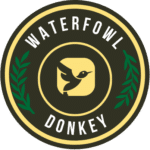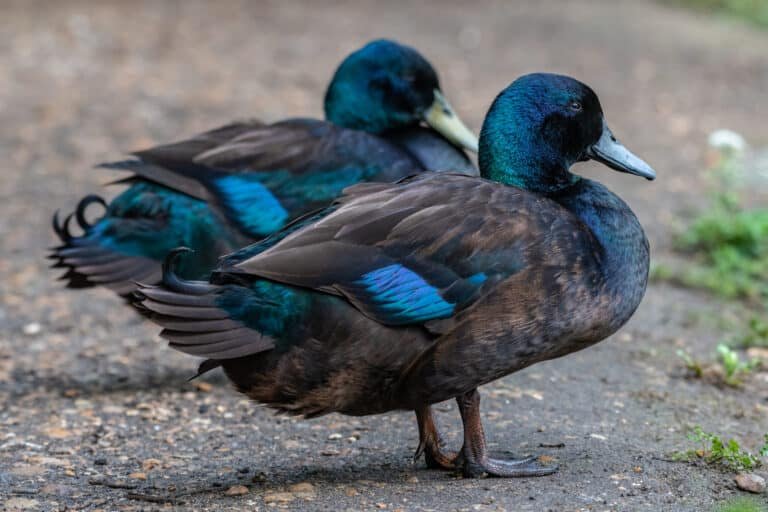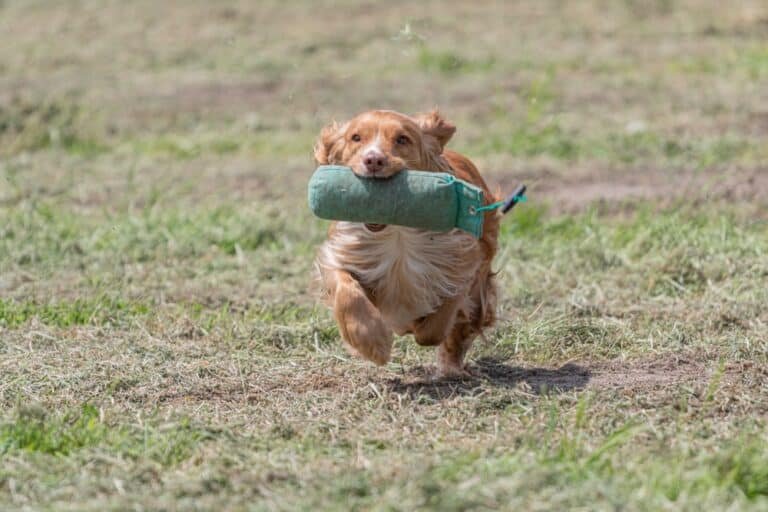Culinary Secrets for Preparing Waterfowl You Should Know
Welcome, fellow nature enthusiasts and culinary adventurers! Today, we embark on a journey that delves into preparing and cleaning waterfowl. Whether you are an avid hunter, a culinary connoisseur, or simply someone intrigued by the world of wild game cuisine, this article aims to equip you with the knowledge and techniques necessary to transform your waterfowl from the field to the table.
Importance of Proper Preparation and Cleaning Techniques
Before we dive into the nitty-gritty details, let’s take a moment to understand why proper preparation and cleaning techniques are vital for waterfowl. As with any meat, ensuring cleanliness during every process step is crucial for taste and safety. By following correct procedures, we minimize the risk of contamination from dirt or bacteria that may be present on the bird’s feathers or internal organs.
Furthermore, proper preparation techniques significantly enhance flavor profiles while reducing any potential gaminess often associated with wild game. From plucking feathers or skinning to washing thoroughly and performing precise cuts, each step is essential in transforming your waterfowl into a delectable dish worthy of savoring.
Overview of The Benefits of Consuming Waterfowl
Beyond their fascinating hunting culture and aesthetic appeal in nature photography portfolios, numerous benefits are associated with consuming waterfowl. Firstly, these birds offer lean meat packed with essential nutrients like protein, iron, zinc, vitamin B12, and omega-3 fatty acids. Incorporating waterfowl into our diet can thus contribute positively to our overall health.
In addition to their nutritional value, consuming waterfowl allows us to embrace sustainable food choices. By hunting or sourcing waterfowl responsibly, we can reduce our reliance on intensive farming practices, promoting the conservation of natural habitats.
Furthermore, enjoying the fruits of our hunting or culinary endeavors fosters a deeper appreciation for nature and the delicate ecosystems that these majestic creatures inhabit. So, whether you seek to embark on a gastronomic adventure or explore sustainable protein sources, preparing and cleaning waterfowl offers a unique experience that profoundly connects us with nature’s bounty.
Understanding Waterfowl Species
Different types of waterfowl commonly hunted or consumed
When it comes to waterfowl, a wide variety of species are regularly hunted or enjoyed as a culinary delicacy. Some common examples include ducks such as Mallards, Wood Ducks, Teals, and geese like Canada Geese and Snow Geese.
Each species has distinct characteristics that make them unique in appearance and taste. Understanding the different types of waterfowl available can help you appreciate the nuances in flavor and texture when preparing them.
Unique characteristics and flavor profiles of each species
Waterfowl species differ in physical traits and offer diverse flavor profiles that can enhance your dining experience. For instance, Mallards are renowned for their rich and gamey taste, while Wood Ducks provide a milder flavor with hints of nuttiness. Teals offer delicate and tender meat, often considered a treat for culinary enthusiasts.
On the other hand, geese like Canada Geese have a more robust flavor with rich dark meat that pairs well with hearty dishes. Snow Geese, on the contrary, have a milder taste, making them versatile for various preparations.
By exploring the unique characteristics and flavors of different waterfowl species, you can tailor your cooking techniques accordingly to bring out their best qualities on your plate. Remember to choose responsibly sourced waterfowl from sustainable hunting practices or trusted suppliers to ensure you’re making an environmentally conscious choice while enjoying these delightful birds.
Gathering the Necessary Tools and Equipment
Essential tools for preparing and cleaning waterfowl
When preparing and cleaning waterfowl, having the right tools is crucial. Firstly, you’ll need a sharp and sturdy knife. A boning or filleting knife with a flexible blade works best for precision cuts.
Additionally, a pair of poultry shears will come in handy for trimming the bird’s wings and legs. Don’t forget a cutting board with a groove to catch any juices.
As for safety, keep gloves on hand to protect against contamination from bacteria. And let’s not forget about good old-fashioned paper towels or clean rags – an essential tool for wiping up any messes that may occur during the process.
Optional equipment that can enhance the process
While the essential tools mentioned above will get the job done, some optional pieces of equipment can take your waterfowl preparation to the next level. One such item is a game bird plucker, which makes feather removal incredibly efficient and saves precious time.
If you enjoy crispy skin on your cooked waterfowl, investing in an air compressor can help you achieve that desired result by quickly drying the skin after plucking. Another option is an electric knife, especially if you frequently hunt or consume larger quantities of waterfowl meat.
An electric knife can make quick work of slicing through tough joints and bones with ease. Gathering these essential tools and some optional equipment tailored to your needs and preferences’ll ensure that preparing and cleaning waterfowl becomes both an efficient and enjoyable experience!
Field Dressing Techniques for Waterfowl
Properly Securing the Bird Before Starting the Process
Before you begin field dressing a waterfowl, ensuring the bird is properly secured is crucial to make the process more manageable. Lay the bird on its back and extend its wings away from its body.
While one hand holds the wings in place, use your other hand to tuck the head under one wing gently. This position not only keeps the bird steady but also allows for easier access to its abdomen.
Removing Feathers, Wings, and Legs Efficiently
Now that you have securely positioned the waterfowl, it’s time to remove its feathers, wings, and legs. Begin by plucking any visible feathers around the breast area and down toward the legs.
Take care not to pull too aggressively to avoid tearing or damaging the skin. Next, remove both wings by grasping them firmly near their joints where they connect to the body.
Apply gentle pressure while twisting them in an outward motion until they detach. To remove the legs of the waterfowl, locate where they meet with its body and use a sharp knife or poultry shears to sever these joints carefully.
Take your time during this process to ensure a clean cut and minimize potential damage. Following these steps for securing and efficiently removing the waterfowl’s feathers, wings, and legs during field dressing, you can streamline your preparation process while maintaining optimal meat quality for future cooking endeavors.
Plucking Feathers or Skinning: Choosing Your Method
Benefits and drawbacks of plucking feathers versus skinning
When preparing waterfowl, one crucial decision you have to make is whether to pluck the feathers or opt for the skinning method. Plucking feathers offers several advantages. First and foremost, it allows you to preserve the bird’s skin, which can add a delightful crispness when cooked.
Additionally, leaving the skin intact helps retain moisture and flavors within the meat during cooking. However, plucking can be time-consuming, especially for larger waterfowl with numerous feathers.
On the other hand, skinning is a quicker alternative that involves removing the bird’s feathers entirely along with its skin. While this method saves time in preparation, it may result in some fat loss during cooking.
Traditional plucking method: preserving skin for cooking
The traditional approach of plucking feathers from waterfowl requires patience and precision. Still, it rewards you with delicious, crispy skin that adds texture and flavor to your dish. First, start by carefully removing all visible feathers from the bird’s body using your hands or pliers designed specifically for feather removal.
Take time and work gently to avoid tearing or damaging the delicate skin underneath. Once all external feathers are removed, pay close attention to hard-to-reach areas like wings and tail feathers – tweezers can be helpful here – ensuring a thorough cleaning process.
Skinning method: faster but may result in loss of some fat
If time is of the essence or you prefer a more streamlined approach when preparing waterfowl, opting for the skinning method could be your best bet. This technique involves removing the bird’s feathers and its entire outer layer of skin before proceeding further with cleaning and preparation. Skinning saves considerable time and effort, as the feathers and skin can be removed swiftly.
However, it’s essential to note that this method may result in some fat loss during cooking. The layer of fat beneath the skin helps keep the meat moist and adds flavor, so removing it through skinning might sacrifice a bit of juiciness.
Nonetheless, if convenience and speed are your priorities, skinning could be the way to quick and efficient waterfowl preparation. Remember to choose the method that aligns with your preferences and desired outcome when preparing waterfowl.
Whether you opt for plucking or skinning, both methods have advantages and drawbacks. Ultimately, your decision will depend on available time, desired textures, flavors, and personal culinary preferences.
Cleaning Internal Organs
Removing entrails safely without contaminating meat
When cleaning waterfowl, one essential step is removing the entrails. This process should be done with utmost care to avoid meat contamination.
Begin by making a shallow incision from the breast towards the vent along the bird’s belly. Take caution not to puncture any organs during this process.
Using your fingers or a small knife, gently loosen and remove the entrails, being mindful not to rupture them. It is crucial to handle this task delicately to prevent bacteria from spreading onto the meat and compromising its quality and safety for consumption.
Tips for inspecting organs to ensure quality
After removing the entrails, inspecting the organs before proceeding further is important. Look closely at each organ for any signs of disease or abnormalities.
The liver should be firm and free from discoloration or spots. Any presence of odd smells or unusual colors may indicate an unhealthy bird.
Examine the heart and kidneys; they should appear healthy with no signs of degradation or irregularities. By thoroughly examining these internal organs, you can ensure that you prepare a safe and fit waterfowl for consumption.
In this section on preparing and cleaning waterfowl, we have covered two crucial aspects: safely removing entrails without contaminating meat and inspecting organs for quality assurance. These steps are integral in maintaining food safety standards while ensuring that you are enjoying flavorful and healthy waterfowl meals.
Washing, Soaking, and Brining Techniques
When it comes to preparing and cleaning waterfowl, one crucial step that should never be overlooked is washing the bird thoroughly. Washing helps remove any dirt or debris that may still cling to the feathers or skin and eliminates any potential bacteria that could contaminate the meat during cooking.
Begin by rinsing the bird under cold running water, ensuring that every part of its body is exposed to the water. Gently massage the skin to dislodge any stubborn grime.
Soaking methods to tenderize the meat and reduce gaminess
Soaking techniques can combat any potential gaminess in waterfowl meat and enhance tenderness. One popular method involves creating a marinade or brine solution.
Prepare a mixture of water, salt, sugar, and aromatic ingredients such as herbs or spices. Submerge the cleaned bird in this solution for several hours or overnight in the refrigerator.
The salt helps break down muscle fibers while imparting flavor to the meat. The result is more tender flesh and a reduction in gamey flavors often associated with wild birds.
Bringing options to enhance flavor and moisture retention
If you desire an extra burst of flavor and improved moisture retention in your prepared waterfowl dishes, consider utilizing brining techniques. Brining involves immersing the bird in a saline solution typically consisting of salt, sugar, and other desired seasonings for an extended period before cooking. This process allows the flavors from the brine mixture to infuse into every fiber of the meat while enhancing its natural juiciness by helping it retain moisture during cooking.
To create a basic brine solution for your waterfowl, dissolve salt and sugar in cold water until fully incorporated. Add flavorings such as herbs, spices, or fruit juices for a more complex taste profile.
Place the bird in a container large enough to fully submerge it in the brine solution and refrigerate overnight or for at least a few hours. The longer you brine, the more pronounced the flavors will become.
Cutting, Trimming, and Butchering Waterfowl
Proper techniques for cutting into desired portions
When cutting waterfowl into desired portions, a sharp knife and a steady hand are your best friends. Start by removing the breasts from the bird.
Make a shallow incision along the breastbone and gently pull the meat away from the bone, following its natural contours. Once you have removed both breasts, you can keep them whole or slice them into smaller pieces, depending on your intended use.
For leg meat, separate the drumsticks from the thighs by locating the joint and cutting it cleanly. Remember always to cut away from yourself and use caution to avoid any accidents.
Trimming excess fat or undesirable parts
Waterfowl can have a layer of fat that adds flavor but may be excessive or undesirable for certain dishes. To trim excess fat, carefully slide your knife along the skin and remove as much of it as desired while being cautious not to remove too much meat.
Additionally, some parts of the waterfowl might not suit everyone’s taste preferences. For instance, if certain areas have a stronger gamey flavor or tougher texture than desired, trim those parts before cooking to ensure an enjoyable dining experience.
Butchering options based on personal preferences
The beauty of butchering waterfowl allows for personal preference in cuts and preparations. You can opt for traditional cuts such as whole birds or individual portions like breasts and legs. However, alternative methods are worth considering based on your culinary vision.
Some enthusiasts prefer deboning their waterfowl completely for easier cooking or stuffing possibilities. Others may choose to spatchcock (removing backbone) their birds before grilling them whole for a different presentation.
The key is experimenting and discovering what suits your taste buds and cooking style best. Remember, practice makes perfect for cutting, trimming, and butchering waterfowl.
Don’t be discouraged if you don’t get it right the first time; with time and experience, you’ll improve your skills. So, grab that trusty knife, put on some relaxing music, and enjoy transforming your hunted waterfowl into delicious culinary creations.
Storage Options
Once you’ve prepared and cleaned your waterfowl, storing them properly is important to maintain their freshness and flavor. Here are some storage options to consider:
Refrigeration
Refrigeration is a suitable option if you plan on consuming the waterfowl within a few days. Place the cleaned and dressed birds in plastic bags or airtight containers and store them in the refrigerator below 40°F (4°C). Make sure to keep them away from other foods to prevent cross-contamination.
Freezing
If you have a surplus of waterfowl or want to extend their shelf life, freezing is an excellent choice. Wrap each bird individually in freezer paper or heavy-duty plastic wrap, ensuring all air is removed.
Then place them in freezer bags or airtight containers. Label each package with the date of freezing for easy tracking.
Canning
If you want long-term preservation and convenience, consider canning your waterfowl meat. Pressure canning is the recommended method for ensuring safety and preventing bacterial growth. Follow proper canning techniques and guidelines provided by reputable sources.

Conclusion
Preparing and cleaning waterfowl is an essential step and an art form that ensures optimal taste and safety for consumption. So next time you find yourself with a waterfowl, embrace the process and take pride in preparing and cleaning it with finesse.
With patience, practice, and a dash of adventurous spirit, you can elevate your culinary skills while enjoying the rewards of nature’s bounty. So go forth, armed with knowledge and enthusiasm, and treat yourself to the flavors of the wild!






